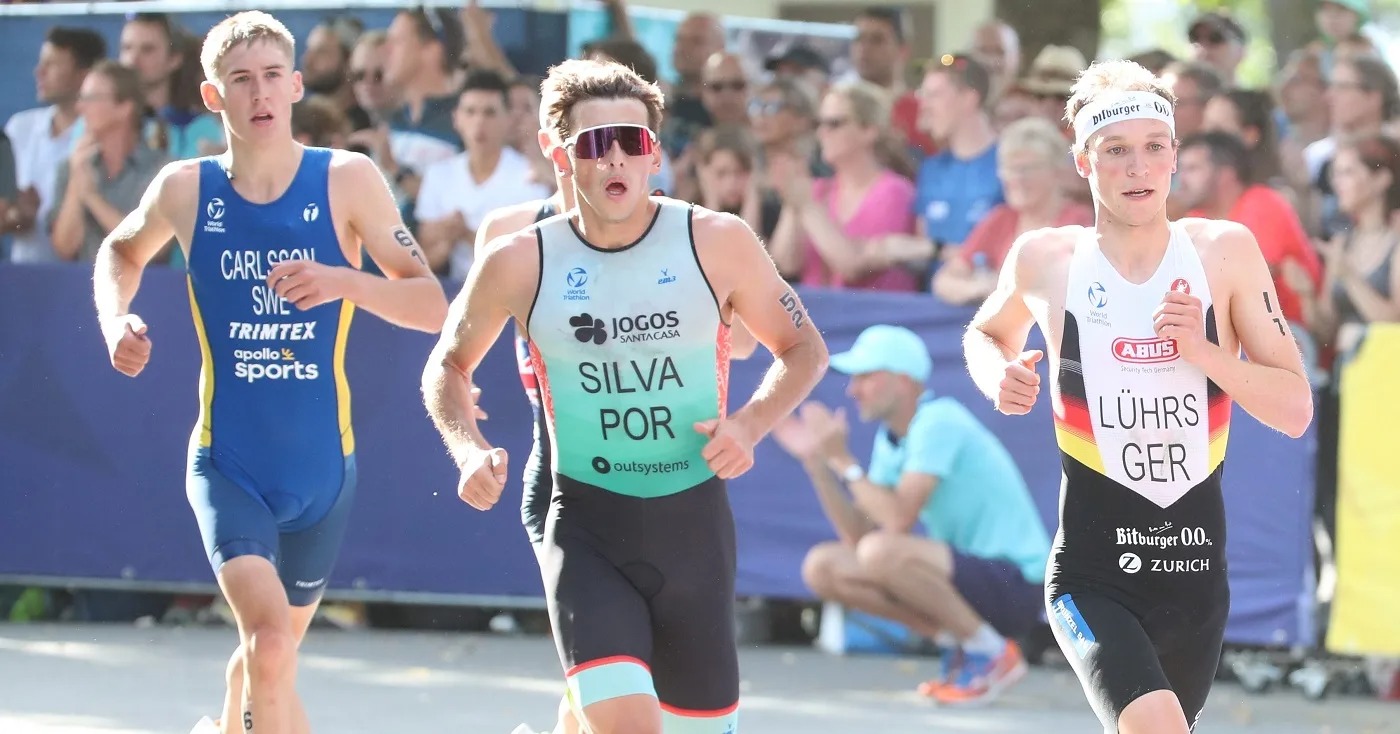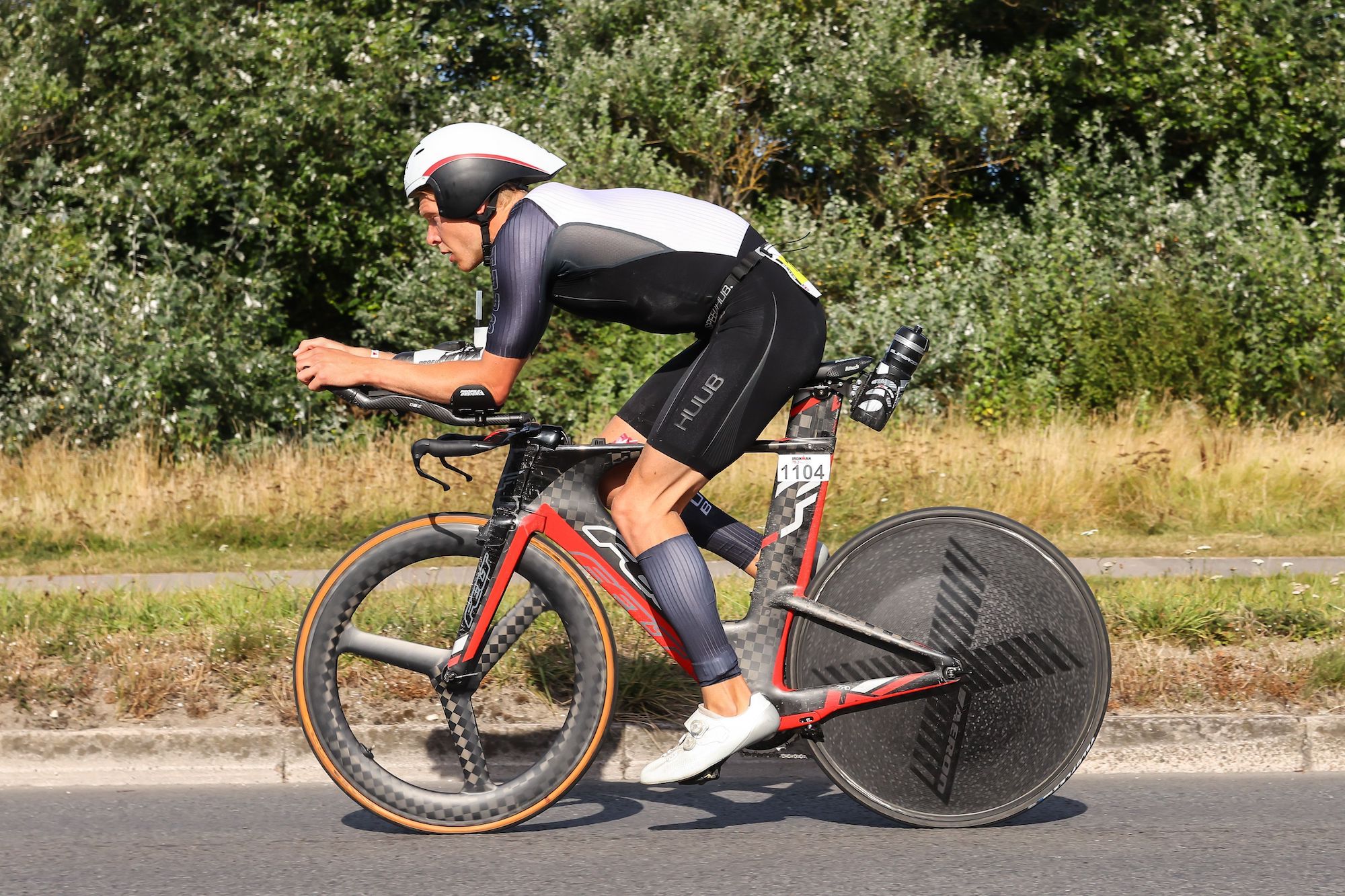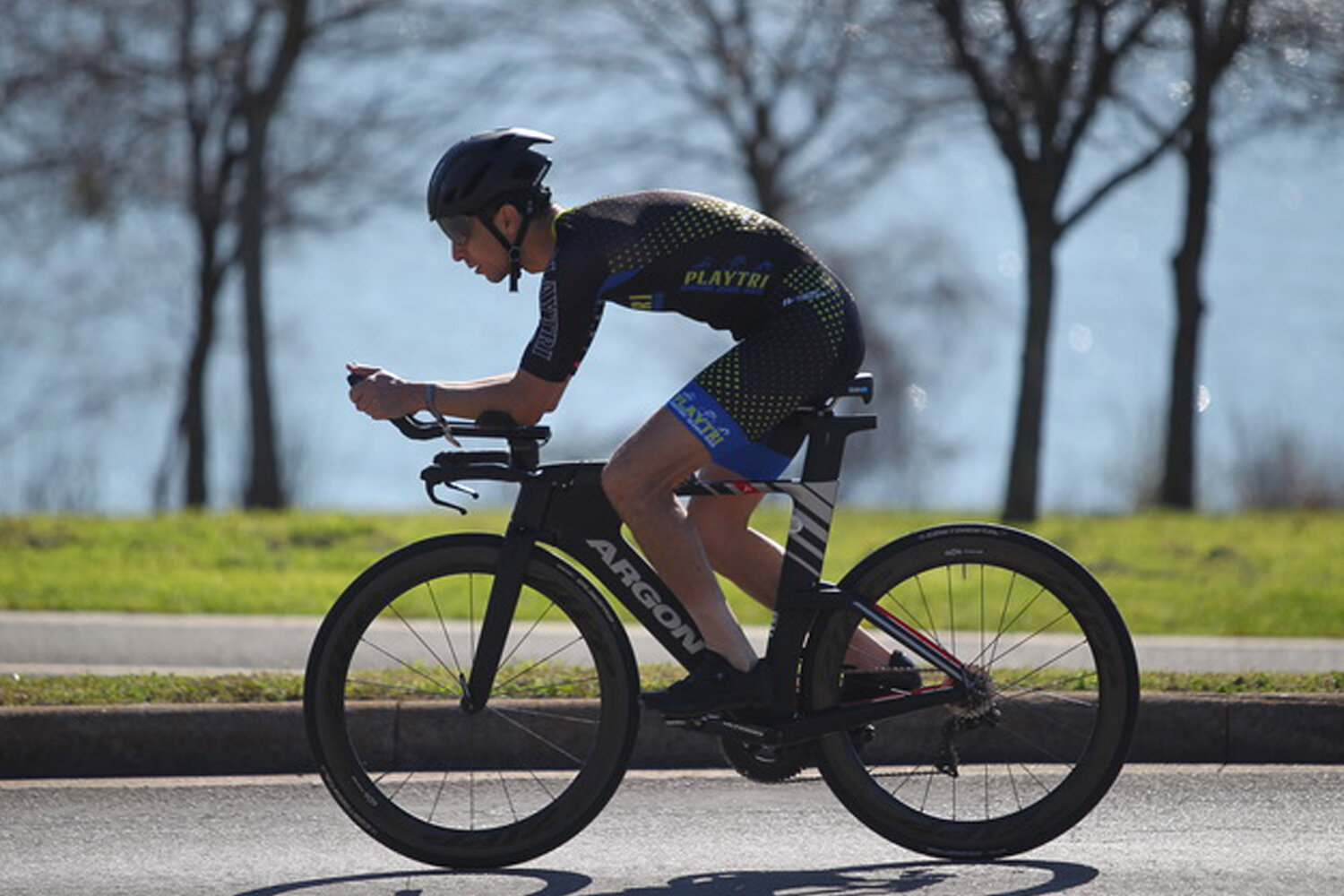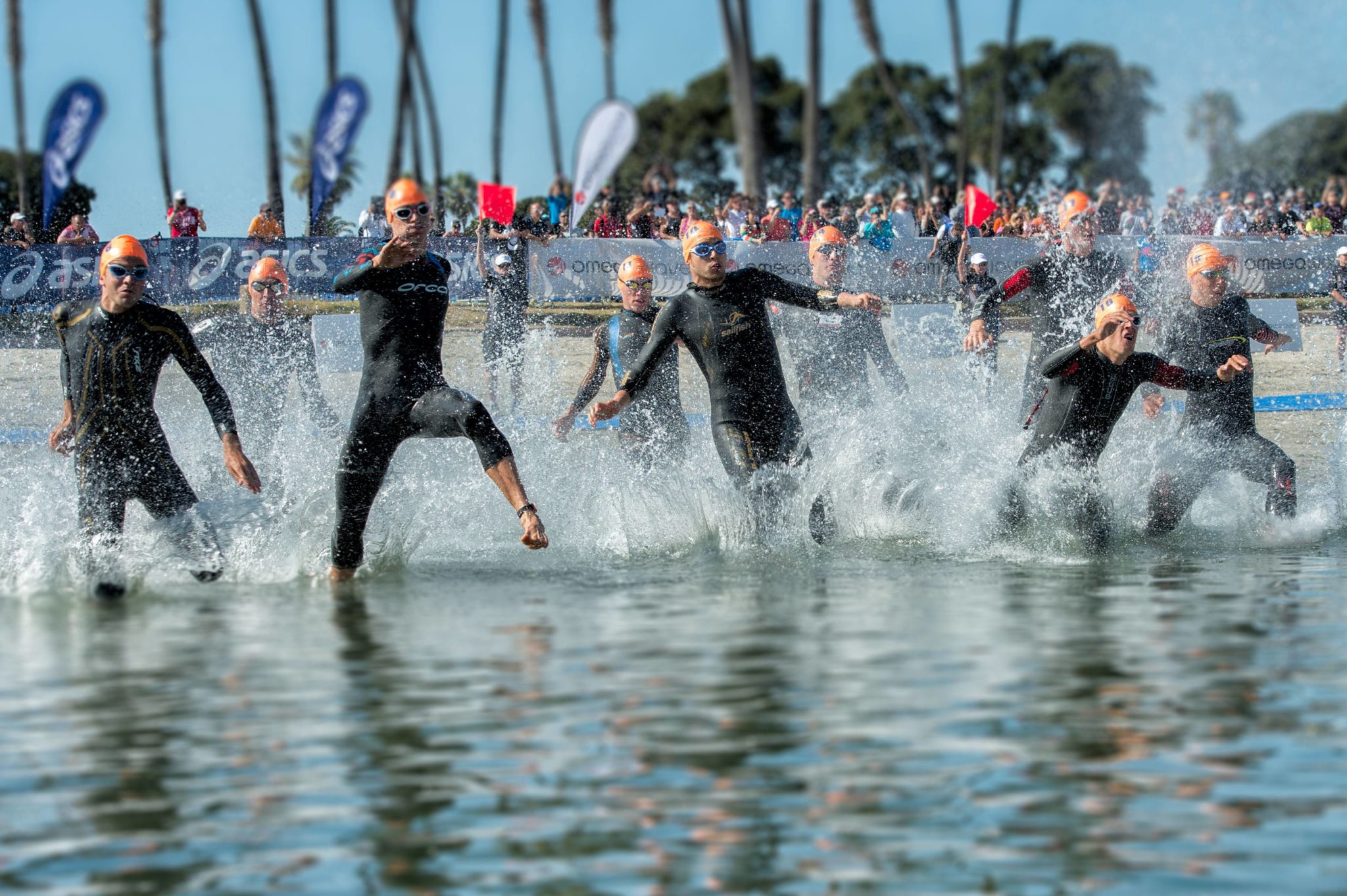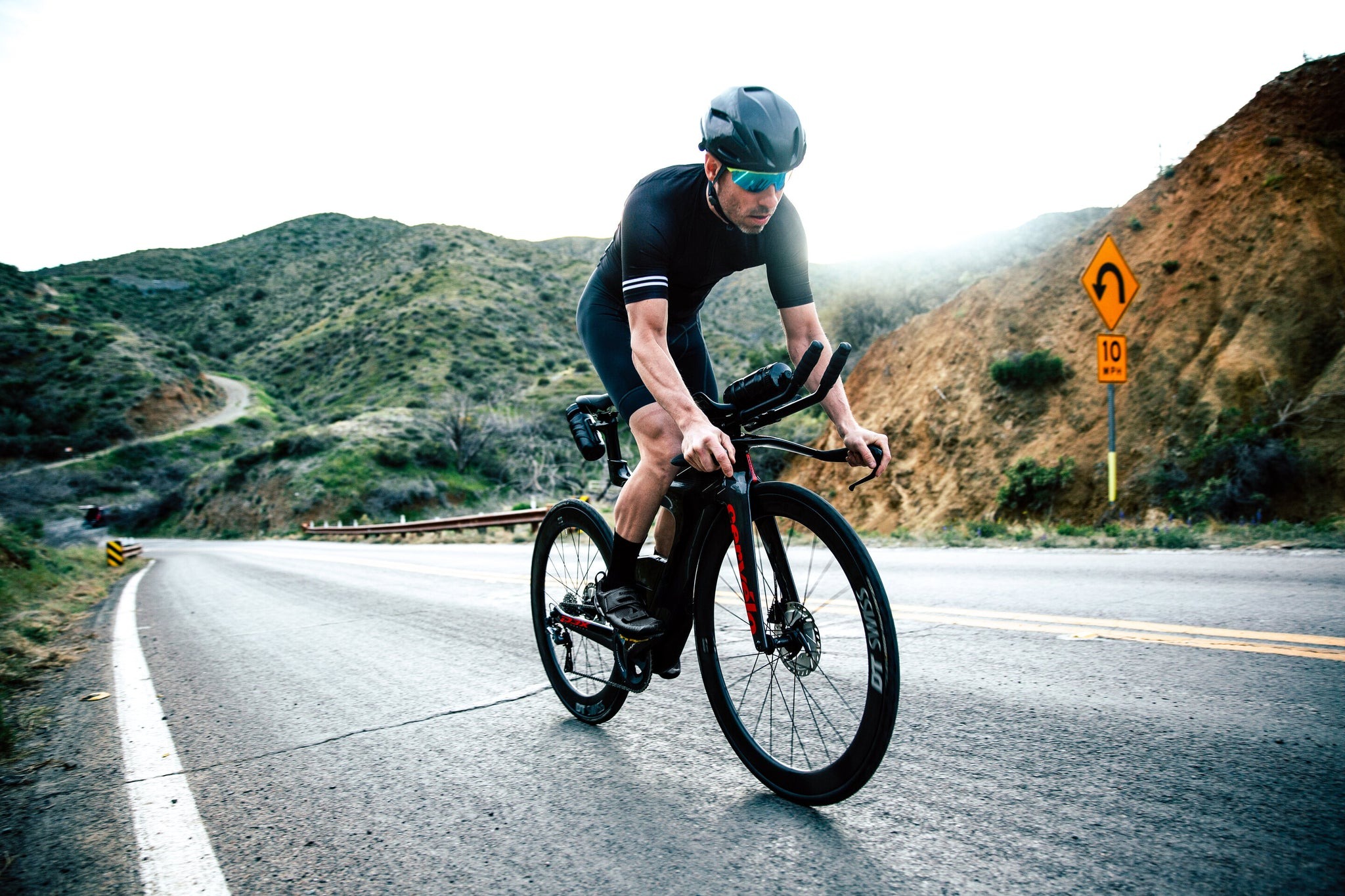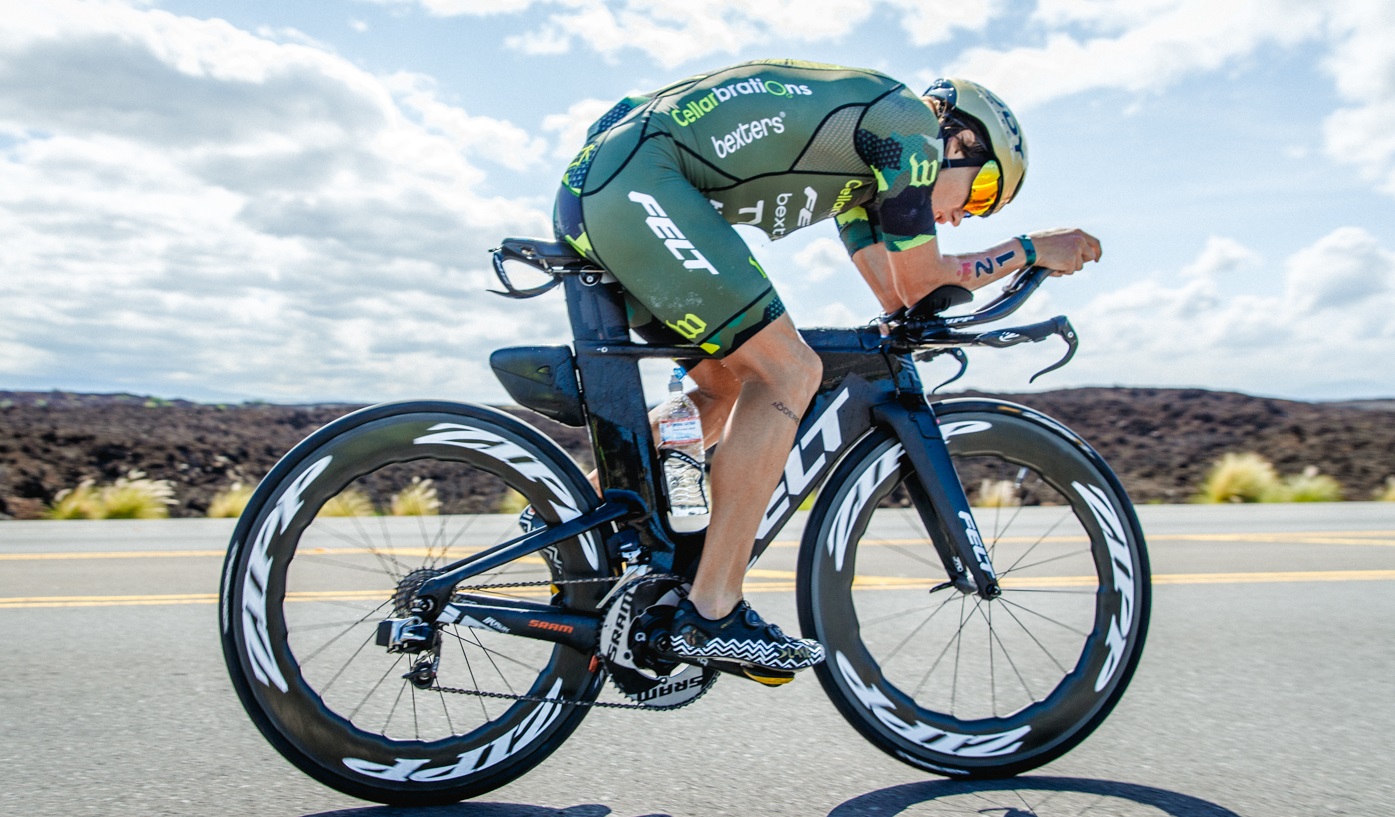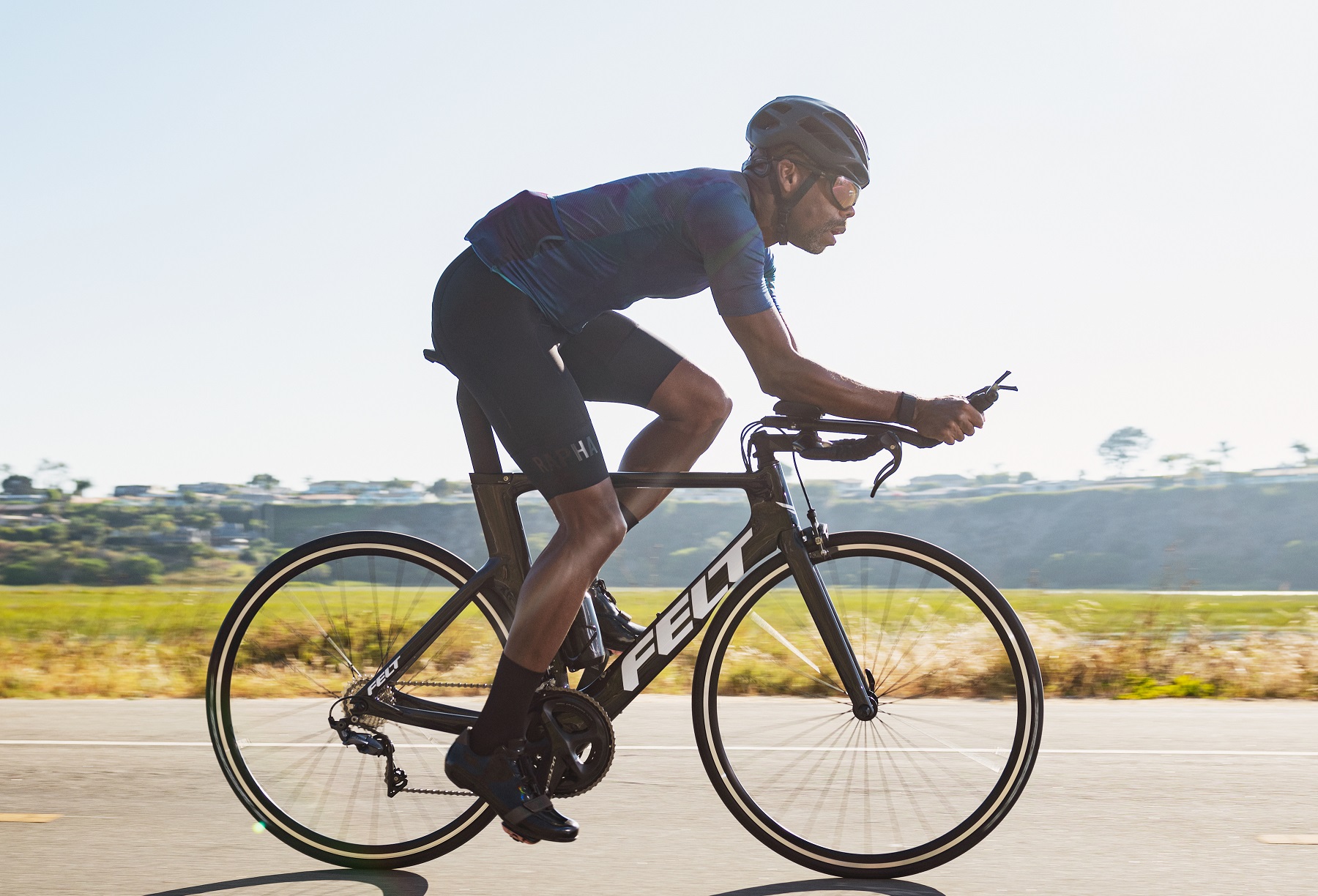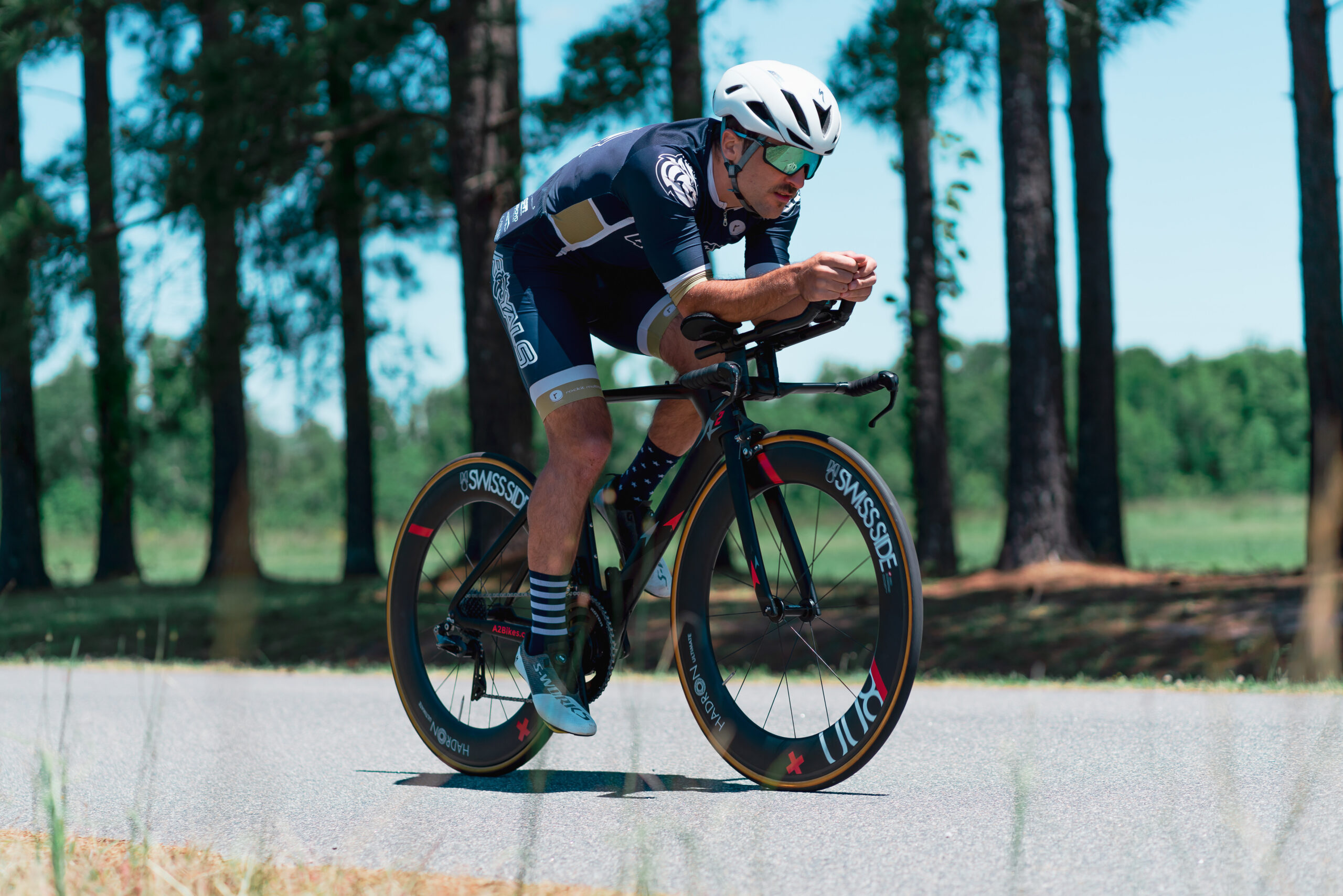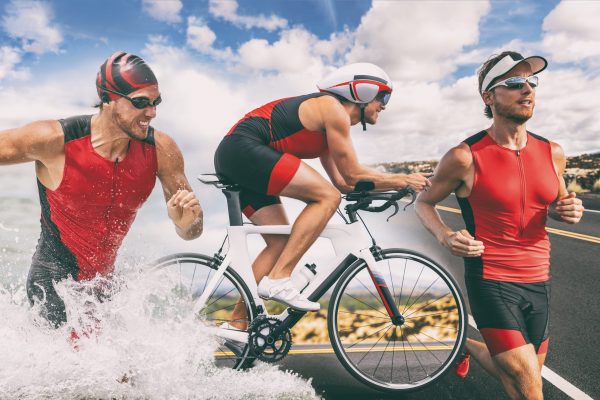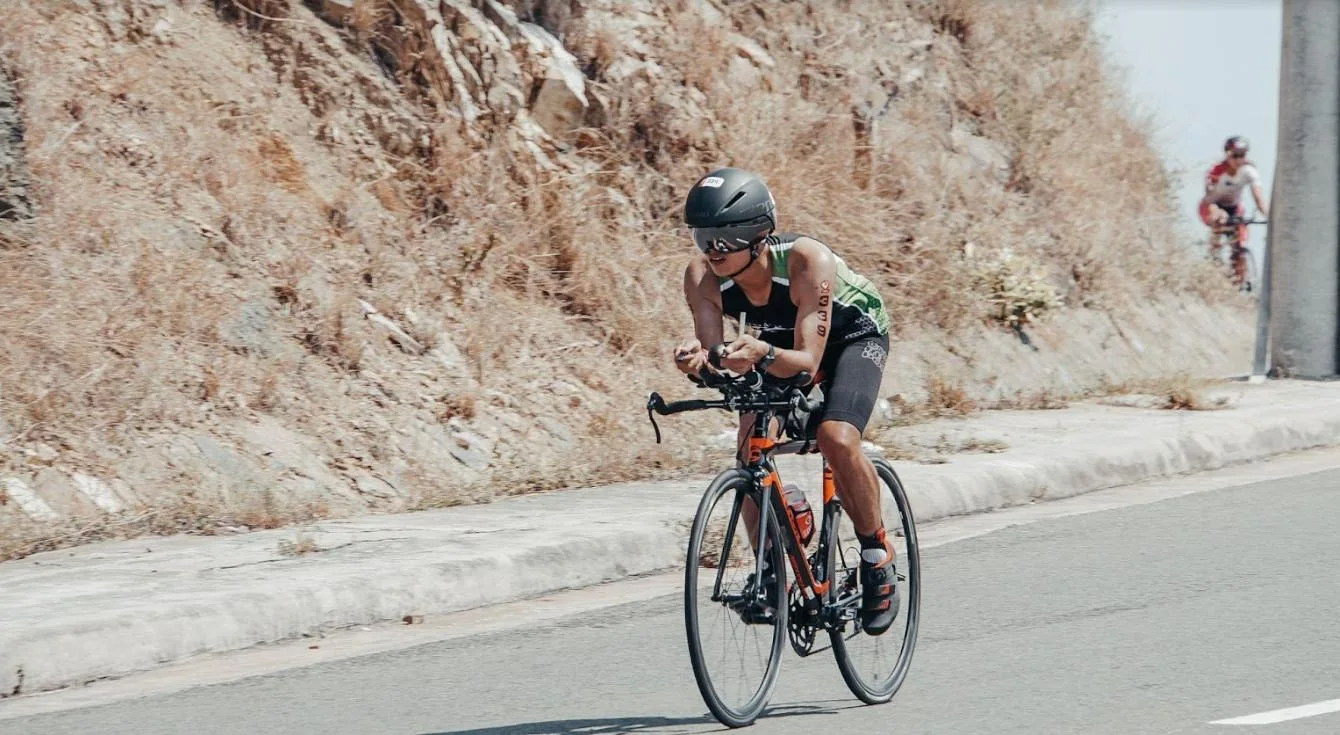

Featured
How Much Does A Triathlon Bike Weigh
Published: August 12, 2023
Discover the lightweight Triathlon bikes featured in our collection. Find out how much a Triathlon bike weighs and choose the perfect one for your race
Introduction
Triathlon is a demanding sport that combines swimming, cycling, and running. It requires athletes to possess not only physical endurance but also the right equipment to maximize performance. One of the most crucial pieces of equipment for any triathlete is their bike, specifically a triathlon bike.
Triathlon bikes are specially designed to provide aerodynamic advantages, allowing athletes to maintain high speeds while conserving energy for the rest of the race. In addition to aerodynamics, the weight of the triathlon bike plays a significant role in its overall performance.
In this article, we will delve into the intricacies of triathlon bike weight and explore the factors that affect it. We will examine the importance of frame materials, components, and wheelsets in determining the weight of a triathlon bike. Moreover, we will discuss the trade-off between aerodynamics and weight, as well as the ideal weight range for a triathlon bike.
Whether you are a seasoned triathlete looking to upgrade your bike or a beginner researching for your first triathlon, understanding the weight of a triathlon bike will help you make an informed decision and optimize your performance on the racecourse.
Understanding Triathlon Bikes
Triathlon bikes, also known as TT (time trial) bikes, are designed specifically for the unique demands of triathlon races. These bikes prioritize aerodynamics, efficiency, and speed, allowing athletes to maintain a streamlined position and generate maximum power output.
One of the key features of a triathlon bike is its aggressive geometry. The frame geometry is optimized to position the rider in a highly aerodynamic position, reducing wind resistance and improving efficiency. The seat tube angle is steeper, placing the rider further forward over the bottom bracket, which enables better power transfer and optimal leg extension.
Another important aspect of triathlon bikes is their integrated components. These bikes often come equipped with integrated handlebars, also known as aero bars, that allow the rider to adopt a low, aerodynamic position. Additionally, triathlon bikes may have integrated hydration systems, storage solutions, and even electronic shifting systems, reducing drag and optimizing performance.
Triathlon bikes also have specific frame designs to enhance aerodynamics. Many models feature aero tubes with a teardrop shape to minimize wind resistance. Some bikes even have hidden brakes, located behind the fork blades or under the bottom bracket, to further reduce drag.
It’s important to note that triathlon bikes are not designed with comfort as the primary focus. The aggressive riding position and stiff frame can result in a harsher ride compared to traditional road bikes. However, this trade-off is made to prioritize aerodynamics and speed.
Understanding the unique design and features of a triathlon bike is crucial for any triathlete. By choosing a bike that suits your needs and preferences, you can optimize your performance and achieve your best results on race day.
Factors Affecting the Weight of a Triathlon Bike
The weight of a triathlon bike plays a significant role in determining its overall performance on the racecourse. While many factors contribute to the weight of a bike, here are some key factors that affect the weight of a triathlon bike:
- Frame Materials: The type of material used in the frame construction has a direct impact on the weight of the bike. Common frame materials for triathlon bikes include carbon fiber, aluminum, and titanium. Carbon fiber frames are known for being lightweight and strong, making them the top choice for many high-performance triathlon bikes.
- Components: The components or parts that make up the bike, such as the drivetrain, brakes, and handlebars, can greatly affect its weight. High-end components made from lightweight materials, such as carbon fiber or titanium, can significantly reduce the overall weight of the bike.
- Wheelset: The weight of the wheelset, including the rims, spokes, and hub, can impact the bike’s overall weight. Lighter wheelsets are desirable as they reduce rotational weight, making it easier to accelerate and climb hills.
- Aerodynamics: Triathlon bikes are designed to be aerodynamic, and this often means sacrificing some weight. Features such as aerodynamic frame shapes, integrated components, and deep-section wheels may add some weight to the bike. However, the reduction in drag more than compensates for the slight weight increase.
- Additional Accessories: Any additional accessories or components added to a triathlon bike, such as hydration systems, storage solutions, or power meters, can increase its weight. It’s essential to balance the need for these accessories with their impact on the overall weight of the bike.
It is important to strike a balance between weight reduction and other performance factors. While a lighter bike may provide an advantage on climbs, it is equally important to consider the bike’s durability, stiffness, and overall aerodynamics. A well-designed and balanced triathlon bike that optimizes weight while maintaining performance is the key to success on the racecourse.
Frame Materials and Weight
The choice of frame material has a significant impact on the weight of a triathlon bike. Different frame materials offer varying levels of weight, strength, and stiffness. Here are some common frame materials and their impact on the weight of a triathlon bike:
- Carbon Fiber: Carbon fiber is the most popular frame material for high-performance triathlon bikes. It is known for its exceptional strength-to-weight ratio, allowing manufacturers to create lightweight yet rigid frames. Although carbon fiber frames tend to be more expensive, they offer the advantage of being light, which translates to improved acceleration and climbing abilities.
- Aluminum: Aluminum frames are a more affordable option compared to carbon fiber. While aluminum is not as light as carbon fiber, it still offers a good balance between weight, price, and durability. Aluminum frames are often used in entry-level or mid-range triathlon bikes and can provide a solid performance without breaking the bank.
- Titanium: Titanium is a high-end frame material known for its lightweight and corrosion resistance. Titanium frames offer a smooth and comfortable ride while maintaining good power transfer. Although titanium frames can be expensive, they are highly durable and have a distinctive look that appeals to some triathletes.
- Steel: While steel frames are not as common in modern triathlon bikes, they still have their enthusiasts. Steel frames are known for their durability, compliance, and timeless aesthetic. However, steel frames tend to be heavier compared to other materials, making them less ideal for achieving top speeds in triathlon races.
When considering frame materials, triathletes must evaluate their budget, performance goals, and personal preferences. Carbon fiber frames offer the lightest weight and highest performance but come with a higher price tag. Aluminum frames provide a good balance of weight and affordability. Titanium frames are sought after by those who value comfort and durability. Steel frames cater to riders who prioritize a classic look and ride quality.
Ultimately, the choice of frame material depends on the individual’s specific needs and budget. Regardless of the material chosen, it is important to select a frame that offers the right combination of weight, stiffness, and aerodynamics to enhance overall performance in a triathlon race.
Components and Weight
The components of a triathlon bike have a significant impact on its overall weight. The choice of components can make a substantial difference in the bike’s performance and the athlete’s race experience. Here are some key components that affect the weight of a triathlon bike:
- Drivetrain: The drivetrain encompasses the chain, cassette, crankset, and derailleurs. High-end triathlon bikes often feature lightweight and performance-focused drivetrain components. Carbon fiber or titanium cranksets, for example, can significantly reduce weight while maintaining strength and stiffness.
- Brakes: Triathlon bikes typically come equipped with aerodynamic brakes designed to reduce drag. Some triathlon bikes feature hidden or integrated brakes that not only improve aerodynamics but also save weight by eliminating external brake calipers.
- Handlebars: The choice of handlebars can impact both aerodynamics and weight. Integrated aero handlebars or bar extensions, commonly known as aero bars, help riders adopt a streamlined position while reducing weight compared to traditional drop bars.
- Saddle: While the weight of the saddle may seem insignificant compared to other components, it can still contribute to the overall weight reduction. Lightweight saddles made from carbon fiber or titanium can provide comfort without adding unnecessary weight.
- Pedals: The weight of the pedals may not significantly impact the overall weight of the bike, but every gram counts in a race. Lightweight pedals made from materials such as carbon fiber or titanium reduce rotational weight and make it easier to pedal efficiently.
When choosing components for a triathlon bike, it is important to strike a balance between weight, performance, and durability. Opting for high-quality, lightweight components can improve overall performance by reducing weight and enhancing efficiency. However, it is essential to consider the durability and reliability of these components, especially during long-distance triathlons.
It’s worth noting that while lighter components may offer advantages in climbing and acceleration, they may also come at a higher cost. It’s important to assess your budget and prioritize the components that will have the most significant impact on your performance and race goals.
By carefully selecting the right components for a triathlon bike, athletes can optimize their weight savings without sacrificing reliability and performance on the racecourse.
Wheelset and Weight
The wheelset of a triathlon bike plays a crucial role in determining both its weight and performance. Choosing the right wheelset can greatly impact a triathlete’s ability to accelerate, maintain speed, and handle various race conditions. Here are some key factors to consider regarding wheelsets and weight:
- Rim Material: The material used in the rim construction can significantly affect the weight of the wheelset. Carbon fiber rims are the most popular choice among triathletes due to their lightweight nature. These rims offer excellent strength and stiffness while reducing rotational weight, allowing for faster acceleration and improved climbing abilities.
- Wheel Depth: The depth of the rim affects both aerodynamics and weight. Deeper rims, such as those found in disc wheels or aero wheelsets, offer improved aerodynamics by reducing drag. However, these deeper rims tend to be heavier compared to shallower rims. Triathletes must strike a balance between aerodynamics and weight based on their race objectives and course demands.
- Spoke Count: The number of spokes in a wheel affects both weight and durability. Lower spoke counts reduce weight but may compromise overall strength and stiffness. Higher spoke counts increase stability and durability but add weight. Triathletes must consider their weight-saving priorities and other performance factors when choosing the spoke count for their wheelsets.
- Hubs: The choice of hubs can impact both weight and performance. Lightweight hubs made from materials like carbon fiber or titanium reduce rotational weight and improve efficiency. Additionally, high-quality hubs with smooth bearings improve rolling resistance, enhancing the bike’s overall performance.
Triathletes must consider their race goals, course conditions, and personal preferences when selecting a wheelset. For flat and fast courses, aerodynamics may outweigh weight savings, while hilly or technical courses may necessitate a lighter wheelset to aid in climbing and handling.
It is important to note that while a lightweight wheelset can enhance acceleration and climbing abilities, durability and reliability should not be compromised. The demands of a triathlon race, particularly over long distances, require robust and dependable wheelsets that can withstand various conditions.
By carefully evaluating the rim material, depth, spoke count, and hubs, triathletes can choose a wheelset that optimizes weight while maximizing performance and race-day success.
Aerodynamics vs. Weight
When it comes to triathlon racing, there is a constant trade-off between aerodynamics and weight. Triathlon bikes are designed to prioritize both factors, but finding the right balance can be a challenge. Here’s a closer look at the relationship between aerodynamics and weight:
Aerodynamics: Aerodynamics refers to the bike’s ability to minimize air resistance and improve overall efficiency. Triathlon bikes are designed with aerodynamic frames, integrated handlebars, and deep-section wheels to reduce drag and maximize speed. These features often add weight to the bike, but the reduction in drag can significantly offset any weight penalties. A more aerodynamic bike allows the rider to maintain higher speeds with less effort, making it a crucial consideration in triathlon racing.
Weight: The weight of a triathlon bike plays a role in its ability to accelerate, climb, and handle. A lighter bike generally requires less effort to accelerate and climb hills, which can be advantageous during races. However, reducing weight often involves sacrificing some aspects of aerodynamics or durability. It is important to find a balance that suits your race demands and personal preferences.
Choosing between aerodynamics and weight depends on various factors, including the race course terrain, wind conditions, and individual riding style. For flat courses and strong tailwinds, aerodynamics may take priority as maintaining high speeds becomes crucial. In contrast, hilly courses may require a lighter bike to aid in climbing and maneuverability.
Ultimately, the decision between aerodynamics and weight is a personal one that should align with your race goals and individual strengths. Conducting wind tunnel tests or seeking professional bike fitting can help optimize aerodynamics while minimizing weight penalties. Additionally, training and conditioning can also contribute to increasing power output, allowing for handling slightly heavier bikes without compromising performance.
It’s important to note that while aerodynamics and weight are essential considerations, other factors such as frame stiffness, handling, and comfort should also be taken into account. Striking the right balance between aerodynamics and weight, while considering other performance factors, will lead to a triathlon bike that is optimized for your specific race needs.
Ideal Weight for a Triathlon Bike
Determining the ideal weight for a triathlon bike involves considering various factors such as the race course, individual preferences, and performance goals. While there is no one-size-fits-all answer, here are some considerations when it comes to the ideal weight for a triathlon bike:
Race Course: The characteristics of the race course play a significant role in determining the ideal weight of a triathlon bike. For hilly or mountainous courses, a lighter bike may provide an advantage in climbing and maneuverability. On flat and fast courses, aerodynamics may take priority, allowing for slightly heavier bikes that maintain high speeds with less effort.
Performance Goals: Your performance goals and race objectives should also guide your choice of the ideal weight. If your focus is on speed and maximum power output, a lighter bike may allow you to achieve faster acceleration and climb efficiently. However, if endurance is a key priority, durability and comfort may outweigh weight savings.
Personal Preferences: Every triathlete has different preferences when it comes to bike weight. Some may prioritize a feather-light bike for a more nimble and responsive ride, while others may prefer a slightly heavier bike for stability and better control. It’s important to consider your own comfort and confidence when selecting the ideal weight for your triathlon bike.
Balance with Aerodynamics: While weight is an important consideration, it is important to strike a balance with aerodynamics. Triathlon bikes are designed to prioritize both factors, and sacrificing one for the other may lead to suboptimal performance. Finding the right balance between weight and aerodynamics is crucial for maintaining high speeds while conserving energy.
Ultimately, the ideal weight for a triathlon bike will vary depending on individual factors. It’s important to test and evaluate different bike setups, considering factors like frame materials, components, and wheelsets, to find the weight range that maximizes your performance and comfort.
It is worth noting that weight is just one aspect of your overall race performance. Training, nutrition, and race strategy also play crucial roles in achieving success. Investing time and effort into these areas will complement the weight optimization of your triathlon bike and help you reach your full potential on the race day.
Conclusion
Choosing the right weight for a triathlon bike is a crucial decision for any triathlete. Understanding the factors that affect weight, such as frame materials, components, wheelsets, and the balance with aerodynamics, can help athletes make informed choices that optimize performance on race day.
Triathlon bikes are designed to prioritize both aerodynamics and weight, as these factors have a significant impact on speed, efficiency, and overall race performance. Carbon fiber frames offer lightweight strength, while aluminum and titanium frames provide a good balance of weight and affordability. Components, such as the drivetrain, brakes, handlebars, and wheelsets, all contribute to the overall weight and performance of the bike.
While a lighter bike can aid in acceleration and climbing, it is essential to find a balance that does not compromise durability, stiffness, or aerodynamic advantages. Each race course and individual’s performance goals also play a role in determining the ideal weight range for a triathlon bike.
Ultimately, triathletes should assess their personal preferences, race objectives, and course demands when choosing the ideal weight for their bike. Testing and evaluating different setups, seeking professional guidance, and considering their own comfort and confidence will lead to a bike that maximizes performance and enhances race-day success.
Remember, while weight is an important factor, it is just one piece of the puzzle. Proper training, nutrition, and race strategy are equally crucial in achieving triathlon goals. By striking the right balance between weight optimization, aerodynamics, and overall performance factors, triathletes can unlock their full potential and enjoy the benefits of a well-designed triathlon bike.
